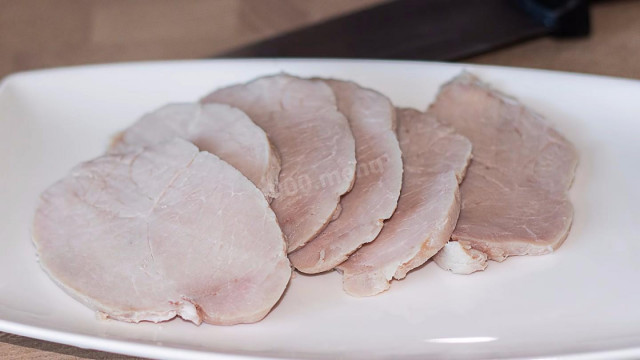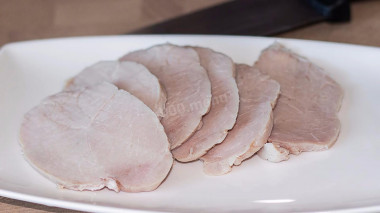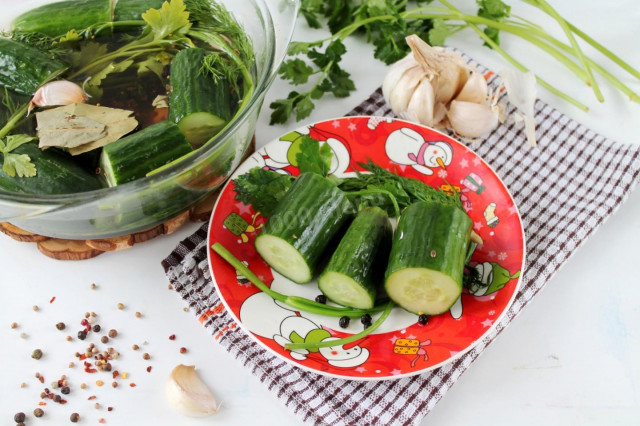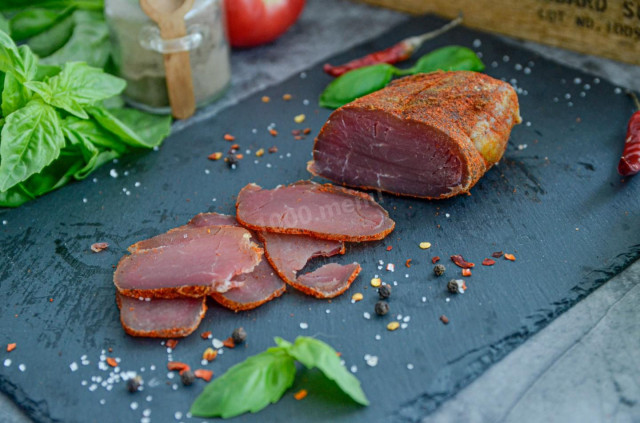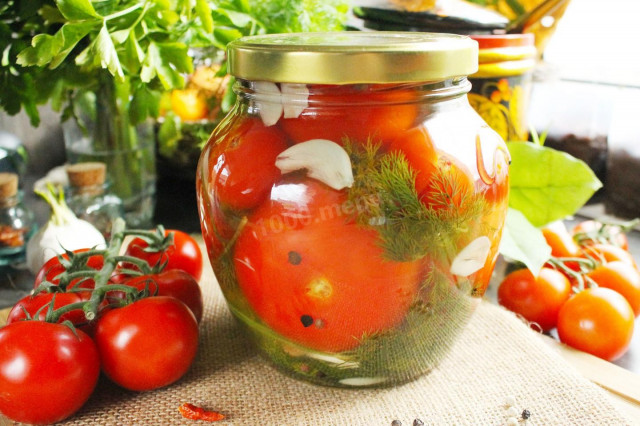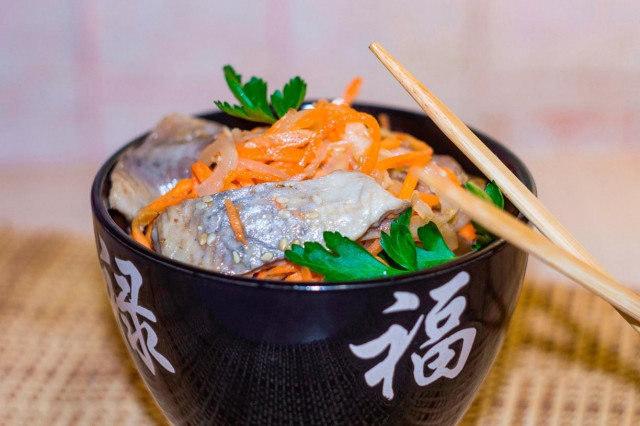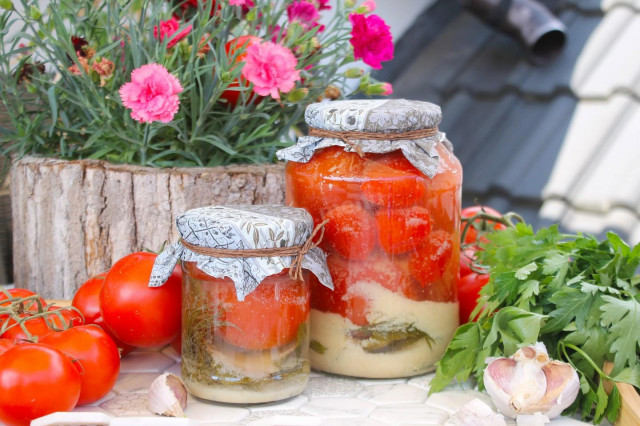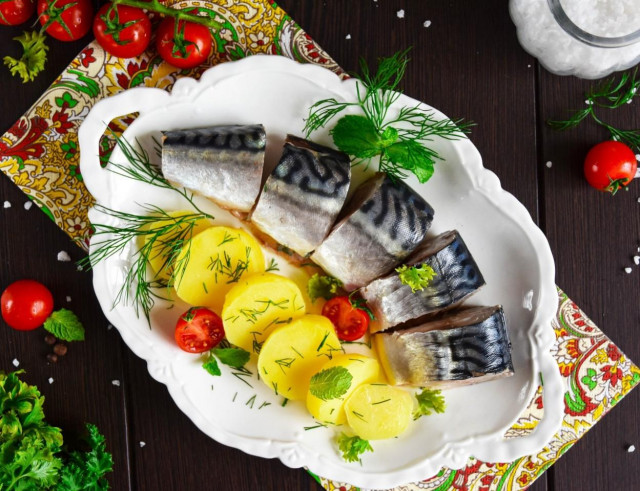Composition / ingredients
Step-by-step cooking
Step 1:
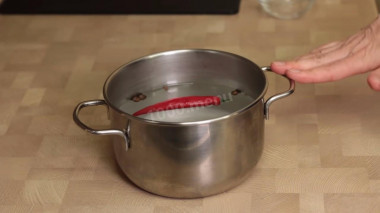
How to make ham from pork? Prepare the products according to the list. Pour a liter of water into a saucepan, add salt and all seasonings. Bring to a boil, stir in the salt and let the brine cool. Then strain it through cheesecloth.
Step 2:
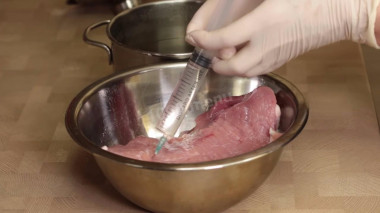
Rinse the meat well. Type the brine into a disposable syringe. Using a syringe, prick the meat ham from the inside with brine from all sides. The more, the better.
Step 3:
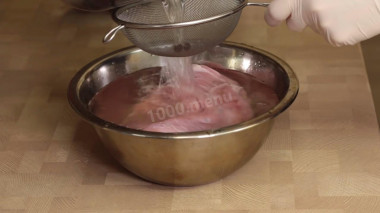
Then put the meat in the remaining brine.
Step 4:
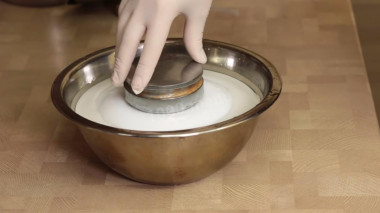
Press down the meat with a small weight and put it in the refrigerator. So it should lie for three days.
Step 5:
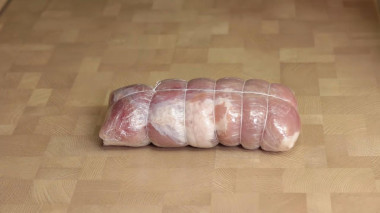
During this time it needs to be turned over a couple of times. When the meat is salted, wrap it in plastic wrap and fasten with twine.
Step 6:
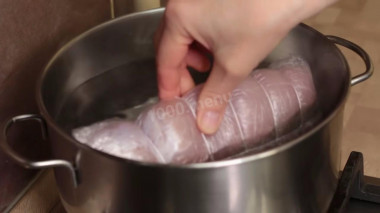
Pour water into a saucepan and put the meatloaf there so that it is completely covered with water. Heat the water to 80°-85° degrees, no more. Measure the water temperature with a kitchen thermometer. Cook the ham until the temperature inside the meat loaf reaches 77 ° degrees. For such an elongated piece like mine, cooking took about 2 hours. If you make a loaf more round, then 2.5 hours.
Step 7:
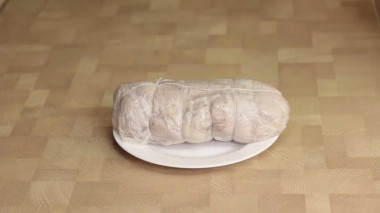
When the desired temperature is reached, drain the hot water and pour cold into the pan. Hold the ham in cold water for 5 minutes without removing the film. Remove the ham from the water and put it in the refrigerator in a film until completely cooled for several hours.
Step 8:
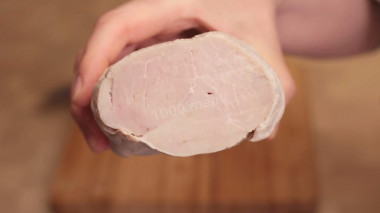
To be honest, the result exceeded expectations. It turned out very tasty. It is very important that the temperature does not rise above the specified parameters, otherwise you will get a dry piece of boiled meat, not juicy ham!
Real sausage makers will certainly say that there is no ham without nitrite salt. And that it's not ham at all, but a piece of boiled meat. I won't argue. For brine, I take 70 g of ordinary salt.
Those who want to get a beautiful color of meat can take 20 g of nitrite salt and 50 g of table salt.
For cooking, it is better to use filtered or bottled water that is neutral to taste. If you use tap water, keep in mind that it can give the dish an unpleasant characteristic taste.
For this recipe, it is better to take fresh meat rather than frozen, otherwise the finished meat risks getting dry.
Caloric content of the products possible in the composition of the dish
- Carnation - 323 kcal/100g
- Bay leaf - 313 kcal/100g
- Hot capsicum - 40 kcal/100g
- Water - 0 kcal/100g
- Table salt - 0 kcal/100g
- Allspice - 263 kcal/100g
- Pork leg - 261 kcal/100g

